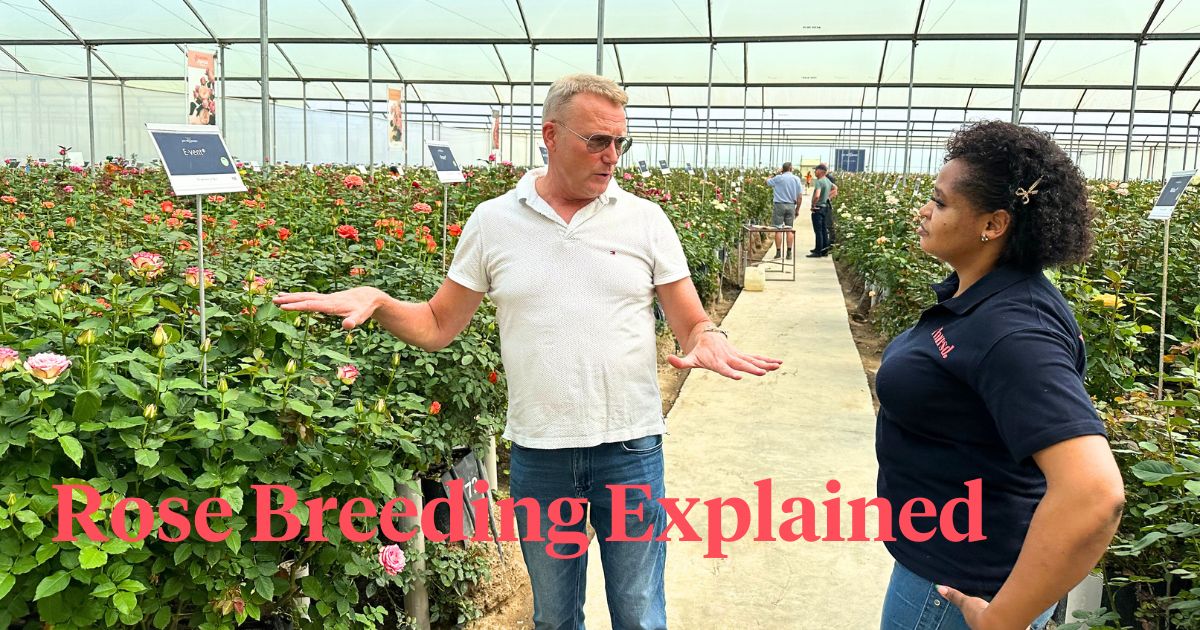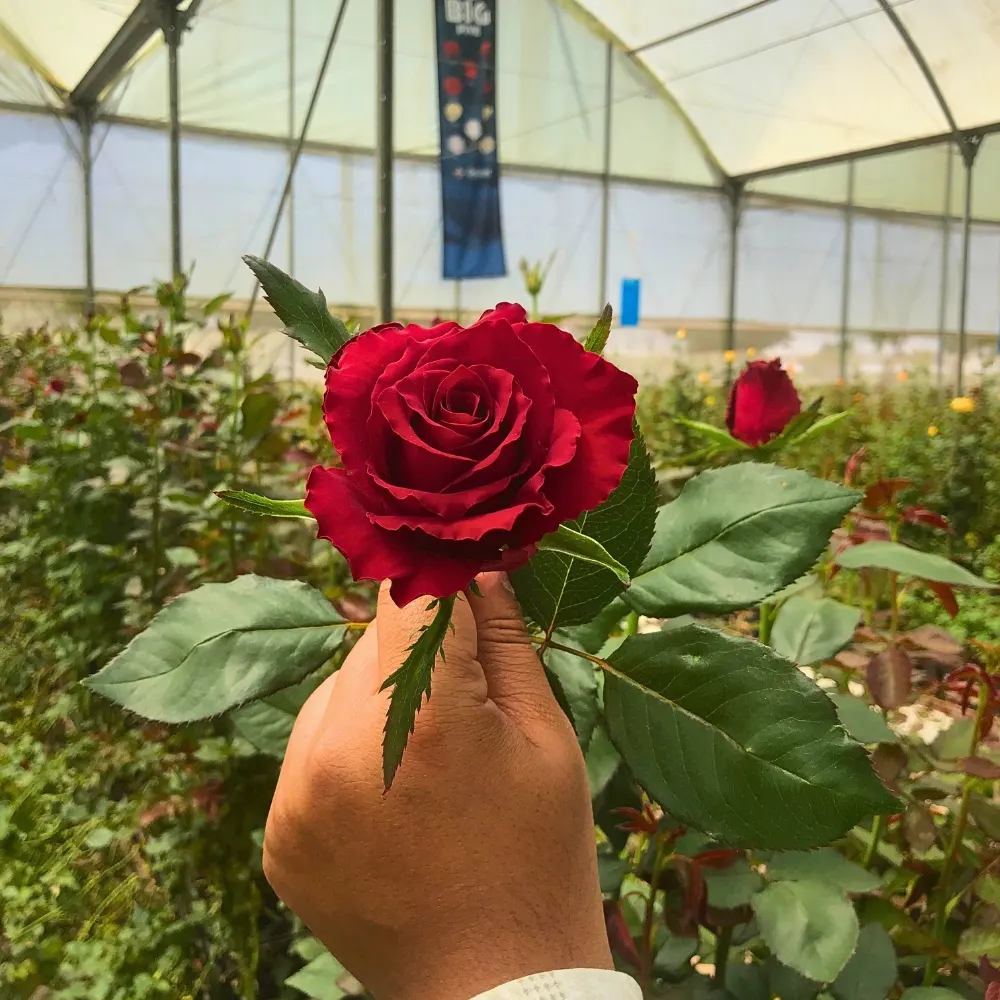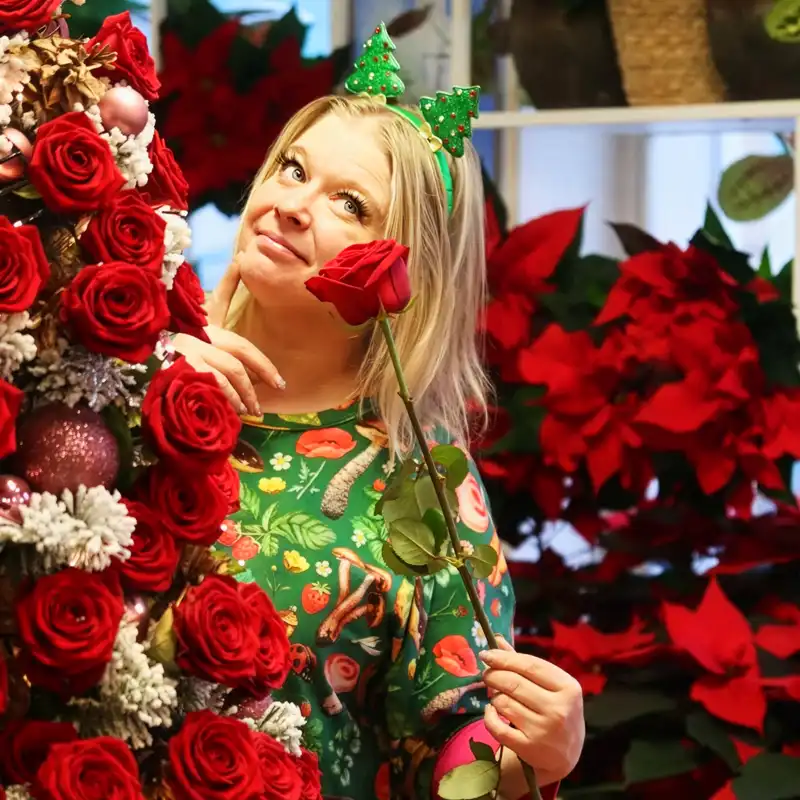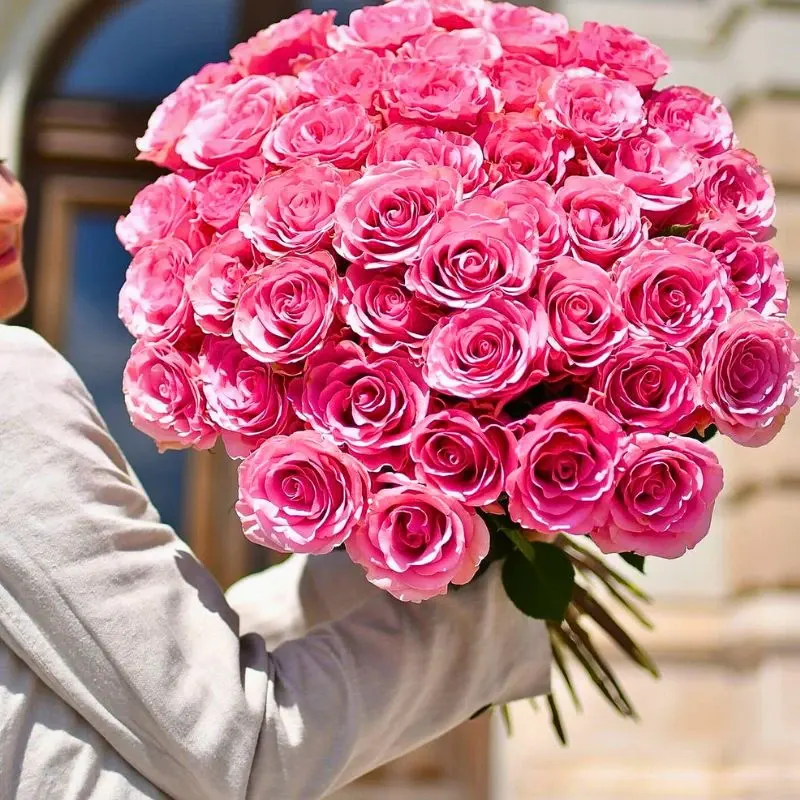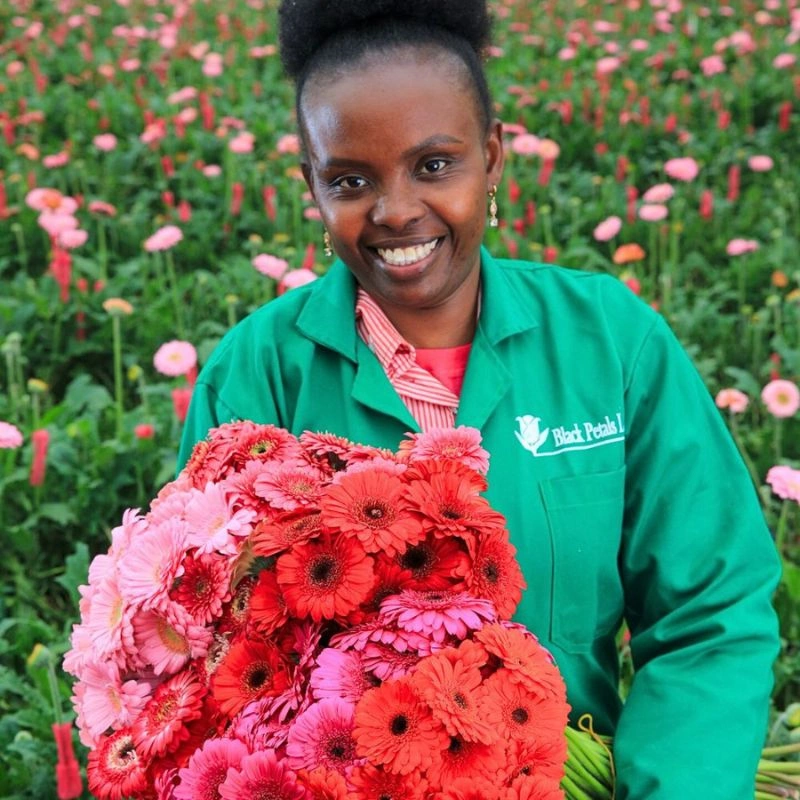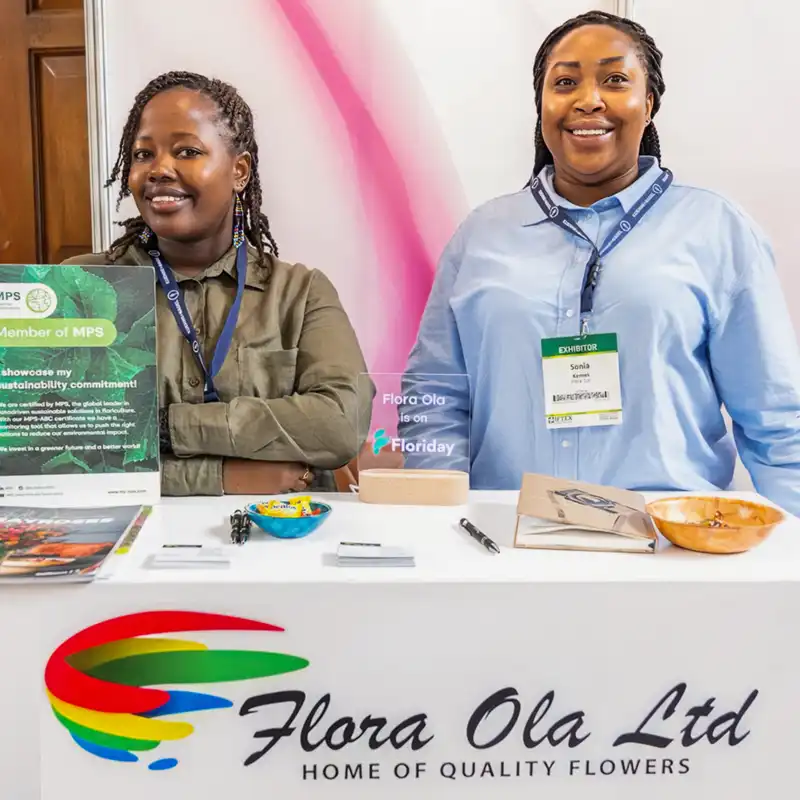Rose breeding is a meticulous process that involves selecting and hybridizing roses to develop new varieties with desirable traits. Erik Spek, a true 'rose-connaisseur', invited the team of Thursd at the Jan Spek Roses Greenhouse at the 'Shopping Mall of Roses' at the Nini farms in Naivasha, Kenya. To tell all about the art of rose breeding, and to show new coming varieties of which Erik Spek explains why a specific rose is promising, and another might not be. Which traits matter in rose breeding? When you find a good rose, what's next? How does it work from breeder to grower to wholesaler to market? Sit down, relax, and let's dive into the art of rose breeding with Erik Spek.

Let's start with the market. Many roses end up in a flower shop or supermarket. You might not know, but these awesome-looking roses have gone through a long road. For the end customer, but also the growers, traders, and floral designers, the following key specifications are essential in the art of rose breeding:
- Color
- Head size
- Productiveness
- Disease resistance
- Thornlessness
- Leaf placement
- Stem strength
- Vase Life
- Growth habit
- Blooming frequency/steering possibilities
- Climate adaptability
- Transportability
The Art of Rose Breeding
Now, all these traits are to be found in the genes of the roses. Breeding a new rose is a unique mix of art and science requiring patience and dedication. From pollination to sale the whole process of creating a new Rose takes somewhere between four and five years. Rose breeding combines art and science to create beautiful, resilient, and unique rose varieties. By focusing on these specifications, breeders can develop roses that meet the needs of both commercial growers and their customers like supermarkets and floral designers.
Whether you are a professional breeder, grower trader, or an enthusiastic floral designer, understanding the complexities of rose breeding can deepen your appreciation for these stunning flowers and inspire you to explore the fascinating world of horticulture.

Specifications and Traits Rose Breeders Seek
There are many traits and specifications the markets ask for. It is like an ongoing battle in the search for the best traits, making breeders compete with each other in an endless battle to find the best new roses.
Below are the most important specifications and traits with an explanation that rose breeders use to select the best new roses.
- Color: Color is a primary consideration in rose breeding. Breeders aim to develop unique and vibrant hues to attract growers and consumers. The goal is to create roses with a wide spectrum of colors, including novel shades and multi-colored petals.
- Head Size: The size of the rose head is crucial for aesthetic appeal. Larger blooms are often preferred for their striking appearance, while smaller blooms may be valued for their delicacy and suitability in compact arrangements.
- Productiveness: Productiveness refers to the rose plant's ability to produce abundant blooms throughout the growing season. High-yielding varieties are favored for commercial cultivation by growers.
- Disease Resistance: Disease resistance is vital for the longevity and health of rose plants. Breeders prioritize developing roses that can withstand common diseases such as black spot, powdery mildew, and rust.
- Thornlessness: Thornless roses are desirable for their ease of handling and safety. Breeders work to reduce or eliminate thorns to create more user-friendly varieties, especially for florists and home gardeners.
- Leaf Placement: The placement of the first leaves is important for aesthetic and practical reasons. Ideally, the first leaves should be positioned so that they do not cover the flowers when the roses are wrapped. This ensures a clean and attractive presentation.
- Fragrance: A pleasant fragrance can be a desirable trait in rose varieties.
- Stem Strength: Sturdy stems are essential for supporting large blooms and for use in floral arrangements.
- Vase Life: Vase life is a crucial trait in rose breeding, referring to the duration that cut roses remain fresh and attractive in a vase. Key factors influencing vase life include:
- Water Uptake: Efficient water uptake ensures the roses stay hydrated and fresh.
- Petal Durability: Durable petals resist wilting and browning, extending the visual appeal of the flowers.
- Ethylene Sensitivity: Reduced sensitivity to ethylene gas, a natural plant hormone, helps prevent premature aging and wilting.
- Cut Stage: The stage at which roses are cut affects vase life; cutting at the right stage of maturity maximizes longevity.
- Stem Strength: Sturdy stems are essential for supporting large blooms and for use in floral arrangements.
- Growth Habit: The plant's overall growth habit, including its height, bushiness, and compactness, is considered in breeding programs.
- Blooming Frequency: Continuous or repeat flowering is a preferred trait for extended display periods.
- Climate Adaptability: Roses that can thrive in various climates are highly sought after.
- Transport Ability: The ability to transport roses effectively is another important consideration in rose breeding. Traits that enhance transportability include:
- Stem Strength: Robust stems are less likely to break or bend during transport.
- Compact Growth: Roses with a more compact growth habit fit better in transport boxes and are less prone to damage.
- Temperature Tolerance: Varieties that tolerate a range of temperatures can endure the varying conditions of transportation.
- Resilience to Handling: Roses that can withstand handling and jostling without losing petals or showing bruises are preferred.
- Packaging Efficiency: The ability to pack roses tightly without damage maximizes the number of flowers per box, reducing shipping costs.

In the picture above you see that Rose Mont Royal has all the right traits, and so, also, really good leaf placement. The pure white Rose Mont Royal epitomizes breeding excellence, emerging as an exceptional choice for the best pure white rose. Answering the specific demands of contemporary flower markets. This rose offers both high productivity for growers and an elegant design for florists and consumers.
Rose Breeding Process
The art of rose breeding is a dynamic and evolving field that combines traditional methods with modern science. By focusing on both fundamental and advanced techniques, breeders continue to create stunning and resilient roses that captivate and inspire. By breeding roses with enhanced vase life and transportability, breeders can ensure that their varieties meet the demands of the floral industry. From growers and wholesalers to retailers and consumers. These traits are essential for maintaining the quality and appeal of roses from the moment they are cut to the time they are displayed in a vase. But as you see, there are many traits, and all are important for selecting the next best new rose.
The process for rose breeding in general goes as follows:
1. Selecting Parents
The 'parents' of each new rose are two mature roses that are crossed to create it. Knowing which two roses might complement one another well and having a strong sense of intuition about it are essential for successful rose breeding. Breeders are constantly searching for plants that will carry on the traits they want.
2. Hybridisation
After choosing acceptable parents, the breeders gather pollen from one and apply it to the other parent's stigma. This is known as cross-pollination, and bees would naturally carry it out. All the breeders together perform millions of manual cross-pollinations annually, removing pollen from the first parent with a little knife and applying it to the second parent with a paintbrush.
Eventually, a rose hip with about ten kid seeds—a blend of both parents—will develop from the cross-pollination. Similar to human offspring, every one of those seedlings will possess an entirely distinct blend of traits from both parents.
3. Seed Sowing
When the hips are fully mature, they allow the breeders to harvest the baby seeds. Then they plant an enormous amount of individual seeds on benches within the greenhouses. These seeds will sprout into little plants with sporadic flowers.
4. Initial Selection
Every germination seedling is evaluated by the breeder at the start of the selection process. Any promising seedling will move on to a field for trials so that it can be evaluated even more. Usually, many distinct seedlings are chosen.
5. Field Trials
Now it's time to evaluate mature rose plants. For the following years, breeders closely evaluate the plants for all the traits they hope to achieve. They pick the best seedlings each year and multiply them.
6. Final Selection
By now they have many plants to assess. At this vitally important stage, breeders are looking for the few roses that they believe are truly worthy of being introduced to the market.

Advanced Techniques in Rose Breeding
Beyond the basic specifications, advanced techniques and considerations further enhance the rose breeding process. These include hybridization methods, genetic studies, and modern biotechnology tools.
- Hybridization Methods: Hybridization is the core of rose breeding. It involves cross-pollinating different rose varieties to combine desirable traits. Techniques such as controlled pollination and selective breeding are used to achieve specific goals.
- Genetic Studies: Understanding the genetic makeup of roses allows breeders to predict and influence the traits of future generations. Genetic mapping and marker-assisted selection help identify genes responsible for desirable characteristics.
- Biotechnology Tools: Modern biotechnology, including genetic modification and CRISPR, offers new possibilities in rose breeding. These tools can introduce or enhance traits such as disease resistance, color variation, and growth patterns more efficiently.
- Market Trends and Consumer Preferences: Breeders also consider market trends and consumer preferences. This involves staying informed about current demands in the floral industry and adapting breeding programs to meet these expectations.
- Environmental Sustainability: Sustainability is increasingly important in rose breeding. Developing roses that require fewer resources, such as water and pesticides, contributes to environmentally friendly cultivation practices.
- Patent and Intellectual Property: New rose varieties can be patented to protect the breeder's intellectual property. Understanding the legal aspects of rose breeding ensures breeders can secure their innovations and gain recognition for their work.
- Testing and Trials: Before new rose varieties are released, they undergo extensive testing and trials. This process includes evaluating their performance in different climates and conditions to ensure they meet the desired specifications.

Collaborative Efforts in Rose Breeding
Rose breeding often involves collaboration between breeders, botanists, geneticists, and horticulturists. Working together, these experts can share knowledge and techniques to advance the field of rose breeding.
Rose breeding is an intricate blend of artistry and science, requiring a deep understanding of plant genetics, horticultural techniques, and market trends. By focusing on key specifications such as color, head size, productiveness, disease resistance, thornlessness, and leaf placement, breeders can develop rose varieties that are both beautiful and practical. Advanced techniques and a commitment to sustainability further enhance the quality and appeal of new rose breeds.
As the field continues to evolve, collaboration and innovation will drive the creation of roses that meet the diverse needs and preferences of gardeners, florists, and consumers worldwide. The art of rose breeding not only enriches our gardens and floral arrangements but also contributes to the ongoing appreciation and cultivation of one of nature's most beloved flowers.

